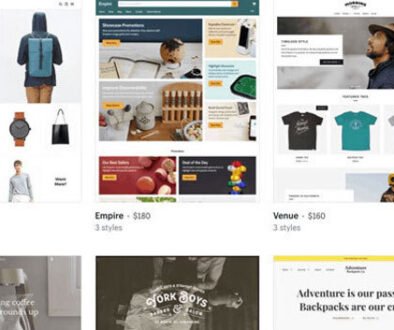How To Find Competitive Niche For Dropshipping Business?
Want to start a dropshipping store but not sure about where to start? The very first step towards a new dropshipping business is choosing a niche. It is also the point where many people get faltered by rushing the process. Yes, you should not make selecting your niche a hard-fought process, but it is an important phase towards starting a successful business and should be given enough time.
Niche selection is the make-or-break point for your dropshipping business. Your niche decides what audience you will get and how you’re going to influence the marketplace. It helps you make better products for your ideal customers.

Are you planning a new dropshipping business? Dropi Stores bring you a custom-designed Shopify store, a guarantee to your successful dropshipping business. Get yours right now.
Find Competitive Niche For Shopify Dropshipping Business
You’ve to remember that your sole goal is to sell the products and sell them big. But, if you’re not going to get the customers, how will you sell those products. Choosing a perfect niche gives your dropshipping business a competitive edge from the very start. By choosing a niche, you’re not restricting yourself but doubling down on a particular part of the market. Providentially, there are some highly reputed online tools to measure the marketplace and build a profitable niche in the long term.
1. Start With Google Trends
The best way to find a competitive niche is understanding what others are selling in a particular category or what is being sold to a specific set of audiences.
Google trends help you search the interests of people over time. The more specific and clear your niche will be, the better the chance of increasing the sales.
It lets you know the uprise or decline in search volumes over time, helping you double down the niche to a specific set of audiences. Google Trends also shows you a list of related search terms.
These can further assist you in deciding your niche and help in shaping your marketing strategy or even SEO efforts later on.
2. Develop A Mind Map
Mind mapping is another great way of discovering a competitive niche for your dropshipping business.
Mind maps can help you capitalize on how your brain is thinking by expanding your ideas. By building a mind map, you can generate product ideas as well as help you discover different niches.
3. Appraise on Keyword Research
The next step that can prove beneficial for you in discovering a competitive niche is using the Google Keyword Planner tool. To explore different relative niches, enter your niche idea and see the results. You can further enhance your results by adjusting the location in settings. It will ensure you’re targeting the right audience. It also allows you to shrink down your results further by adding filters. This analysis of related keywords will help you picture the potential lying in your expected niche. This way, you will have a better understanding of where your future lies as a dropshipping business.
4. Check The Product Value
A common problem most dropshipping businesses face is offering less value to the customers. When you’re building a niche-focused dropshipping store, you need to make it customer-centric. Focus on making your dropshipping store a distinctive destination for your shoppers because this unique selling point is what will make you stand head-to-head with your competitors. Research for different items of your likely niche and see which item is trending and what value it offers to the customers. You must tailor your niche around customer needs, so look for products that provide more value to your customers and are more customer-oriented.
Here are some features that can affect your website’s ranking:
– Efficiency: Can users achieve their objectives when they access your website? For example, can they find the information they are searching for, order the products they want or contact the company for customer service?
In addition to being able to get a goal, how rapidly can a user complete a task?
If visitors can’t find what they want effectively and efficiently on your website, they are more likely to move away. The shorter length of time they stay on your ecommerce website can have a negative impact on your website’s SEO ranking.
Error Prevention: Some errors can affect not only the user experience but also the SEO ranking on a website. For example, a 404 Page Not Found error, a broken link that is no longer valid, or a link that says one thing but displays something else.
Usability and Learning Curve: Can users quickly navigate your website? Are the calls to action that are clickable compatible so that visitors know how to interact? When visitors spend too much time finding out how to use your website, they spend less time looking at your information and products. Also, when they can’t find what they want, they are likely to feel frustrated, navigate away, and never return.
Memorability: Can users find your website the next time they visit to a search engine? Repeated traffic can help you get higher rankings on search engines. Visitors can find their interested stuff or move away from your website for a number of reasons. They can remember it later and try to find it out. Is the keyword linked with this particular search memorable enough for them to find your site again?
How does a good website ergonomics improve SEO ranking?
Search engines reward sites that are user-friendly. Which means they are very easy to use. Google favors sites that are not only good in keywords, but also demonstrate user engagement.
Are you planning a new dropshipping business? Dropi Stores bring you a custom-designed Shopify store, a guarantee to your successful dropshipping business. Get yours right now.



